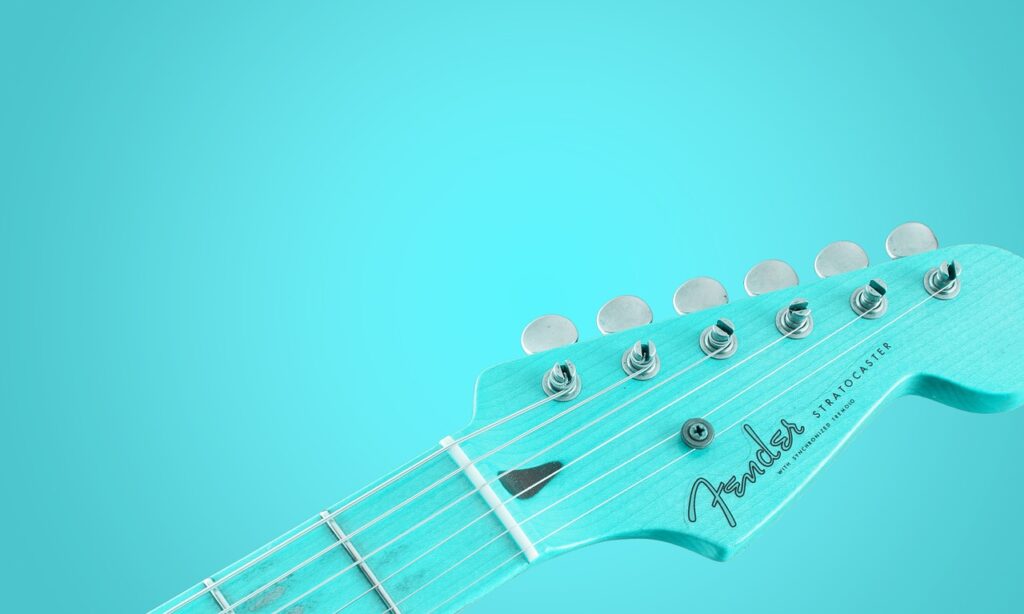Phantom power is an electrical power commonly used in audio equipment to power microphones, preamps, and other devices.
It is typically delivered through a balanced XLR connection and provides a voltage of 48 volts DC to the device.
Phantom power was developed as a means of powering microphones without the need for bulky external power supplies, which were previously required for tube microphones.
This method involves sending the necessary DC electrical current through a balanced XLR cable to power the microphone’s diaphragm and an internal amplifier.
Guitars do not require phantom power to function properly. This is because guitars produce an analog signal, unlike microphones, which require preamplification to produce a stronger signal.
This power source is primarily utilized for condenser microphones, which feature active electronics.
Certain guitars, such as those with built-in electronics or active pickups, may require phantom power to operate properly.
In these cases, the phantom power is typically supplied by the guitar’s preamp or battery rather than by the audio equipment.
Phantom power is an essential tool for powering condenser microphones and provides the necessary voltage for the microphone’s active electronics and polarises the transducer element.
Can Phantom Power Damage A Guitar?
Audio Interface Design
Phantom power cannot damage a guitar due to the design of modern audio interfaces or mixers.
These devices are specifically designed to record multiple inputs simultaneously, including countermeasures to prevent damage from situations where a guitar is plugged in while phantom power is engaged.
Most audio interfaces and mixers are designed to only supply phantom power through an XLR connection, including combo jacks that can accept both XLR and 1/4″ connectors.
If an XLR cable is connected, it will supply phantom power (+48V) to power the microphone, but if a 1/4″ TS guitar cable is used, no electricity will be supplied.
This design ensures convenience and safety for the user, as they do not need to worry about their guitar being damaged by phantom power.
However, this is only applicable if the standard practice of using a 1/4″ TS guitar cable is followed to connect an acoustic-electric or electric guitar.
If an XLR cable is currently being used, switching to a 1/4″ TS guitar cable is recommended immediately.
Difference Between 1/4″ TS Guitar And XLR Cable
For beginners, understanding the difference between using an XLR cable and a standard 1/4″ guitar cable is essential and can greatly benefit them in the long run.
XLR cables are balanced cables, while 1/4″ TS guitar cables are unbalanced.
The primary advantage of XLR cables is their ability to eliminate electronic interference during transmission, a type of noise added to the audio signal by surrounding electronic devices.
The longer the cable, the more interference may occur.
Therefore, XLR cables are commonly used for professional microphones, as mic signals are small and susceptible to electronic interference, significantly affecting audio quality.
On the other hand, using an unbalanced 1/4″ TS guitar cable for guitars is usually sufficient. Guitar signals are typically loud enough that a small amount of electronic interference will not significantly impact the audio signal.
Additionally, the distance from the guitar to an amp or DI box is usually short, minimizing the amount of electronic interference.
DI Box Protection
To ensure the safety of your guitar, it is crucial to use the proper equipment when connecting it to an audio interface.
A DI box can serve as an additional safety measure in this regard. DI boxes, or direct injection boxes, are commonly used to convert unbalanced guitar signals into balanced signals that can be connected to an audio interface or mixer with an XLR cable.
As a safety measure, DI boxes are designed not to pass phantom power to the gear connected to their input.
This feature protects the gear from any potential damage from phantom power. DI boxes can also provide other benefits when connecting a guitar to an audio interface or mixer.
They can help reduce electronic noise and interference and provide a more consistent signal level.
Overall, using a DI box when connecting a guitar to an audio interface or mixer can provide an extra safety layer and improve the audio signal quality.
Which Instruments Require Phantom Power?
Phantom power is essential for powering various audio equipment, including mixing consoles and microphone preamplifiers.
This feature allows for the delivery of DC electrical current through a balanced XLR cable, which powers the circuitry of a microphone or other audio equipment.
In the case of traditional condenser microphones, phantom power is necessary for polarizing the microphone’s transducer element, making it a vital component for these types of microphones.
This technology has revolutionized the recording industry by enabling high-quality, low-noise microphones without the need for bulky external power supplies.
What Are The Potential Risks Of Using Phantom Power On A Guitar?
It is crucial to avoid plugging line instruments, such as a guitar, into XLR input jacks with phantom power engaged.
This can cause damage to your gear due to the high voltage typically present with phantom power.
Therefore, it is highly recommended to only use 1/4″ TS guitar cables when connecting your guitar to an audio interface or mixer.
Additionally, it is important to turn off phantom power before unplugging your microphone to prevent any electrical surges from damaging your equipment.
Does Phantom Power Impact The Quality Of Sound In Audio Equipment?
Phantom power is a type of power supply that is commonly used to power condenser microphones.
It is a +48 Volts DC voltage sent through an XLR cable to power the microphone’s circuitry, including the diaphragm and internal amplifier.
However, some people wonder whether phantom power impacts the sound quality of the audio.
In general, phantom power does not affect the sound quality of the audio signal.
It is simply a means of powering the microphone and does not add any additional noise or distortion to the signal.
However, it is important to note that other factors, such as the quality of the microphone, cables, and other equipment, can affect the sound quality.





